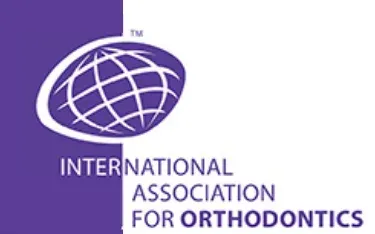May’s Tip

The D-Gainer Appliance, Part I
By Dr. Adrian J. Palencar, MUDr, MAGD, IBO, FADI, FPFA, FICD
April 2023
The definition of the D-gainer appliance from Google:
“The D-Gainer appliance is used instead of a palatal expander to eliminate crowding in the upper jaw and to allow for a wider smile.”
The above is a succinct statement. However, it does not reflect all the attributes of this wonderful appliance. “D” stands for distance gainer; therefore, the primary function is a reciprocal anterio–posterior movement of teeth. The expansion is just a by-product of the mesio-distal forces. Also, D-Gainer appliance slightly bows out – keeps the cheeks away, therefore allows lateral development of the alveolar process (Frankel appliance effect).
The author was introduced to D-Gainer appliance by Dr. Derek Mahony, an orthodontist from Australia several years ago. Dr. Mahony treats many patients in the mixed dentition with moderate crowding, who require 5 – 6 mm expansion, successfully with the D-Gainer appliance. If more expansion is needed (i.e., splitting the Mid-palatal suture) a functional appliance should be used. More details are available on YouTube under “Dr. Derek Mahony, D-Gainer.”
The D-Gainer appliance is most efficient in 2×4 or 2×6 set up and it is effective in both arches. The following are the functions of the D-Gainer appliance:
- Mesial moment (proclination) and bodily movement of incisors
- Distal moment (distalization) of molars
- Transverse development (bowing out the arch wire and the Frankel effect)
- Vertical development (up righting the molars)
- Shifting the midline (more force on one side, less or no force on the other side)
The treatment:
- Place and bond brackets and tubes on the first permanent molars (or second deciduous molars) and four incisors
- Level four incisors (a .014 and a .018 NiTi) sectional arch wire
- If the molar tubes ale leveled try to insert a .018 SS, cut it 10 mm past the tube
- Measure the open coil springs exactly from the molar tubes to the brackets on the lateral incisors and add exactly 4,0 mm, and cut it
- Insert NiTi Open Coil Springs on the arch wire
- Insert and tie the arch wire or close the latches on PSL brackets
- Leave 5.0 mm of straight wire behind the molar tube and then place 90-degree bend-back
It is possible to grow new bone facially by orthodontic forces, by not compressing the blood vessels on the compression side. Keeping the force levels below 32 grams of force, thus avoiding necrosis of the PDL cells (Dr. Ed Lipskis).

References:
- Dr. Derek Mahony, lecture attendance
- Dr. Ed Lipskis, lecture attendance
- Palencar A.J. Personal PP presentations
